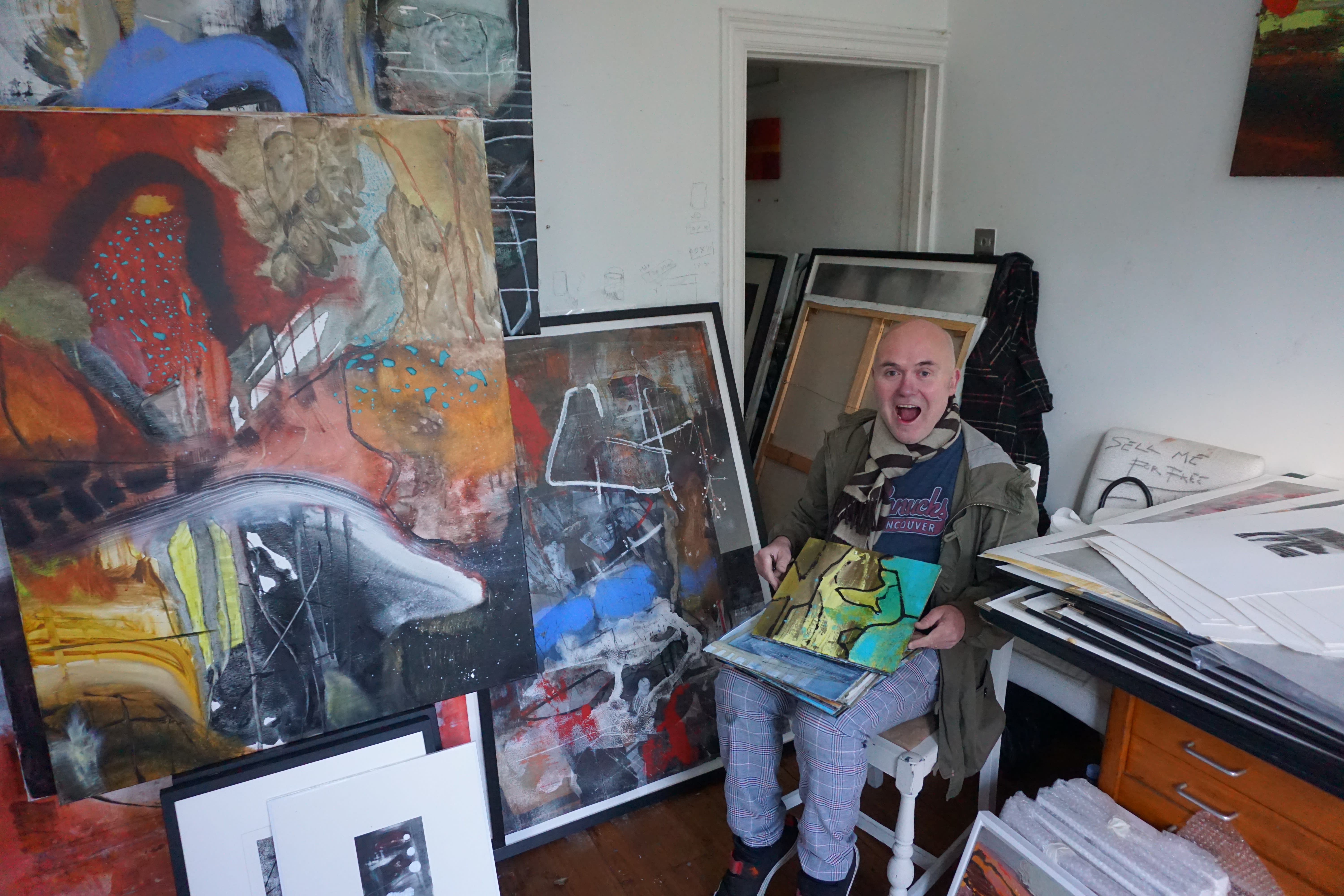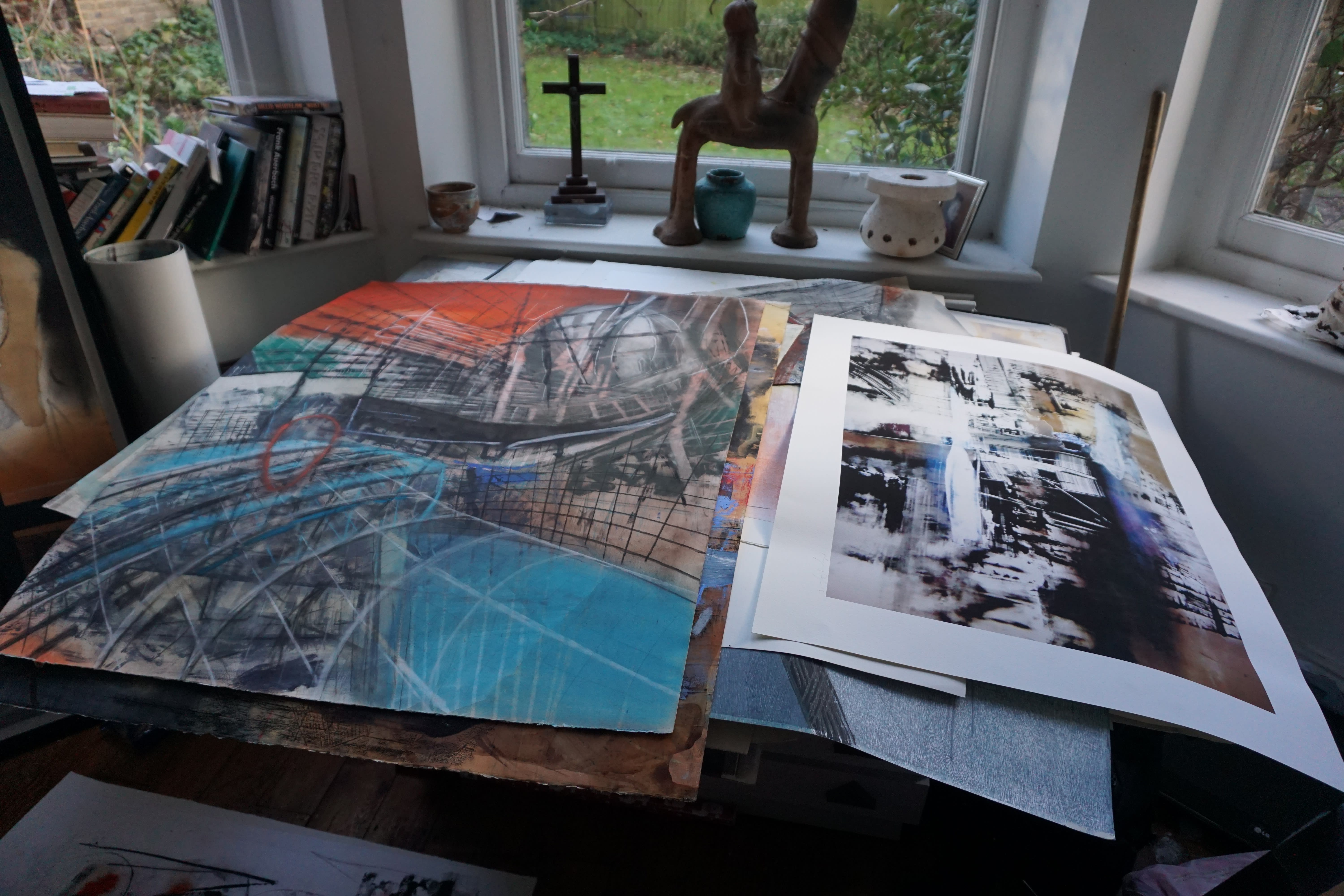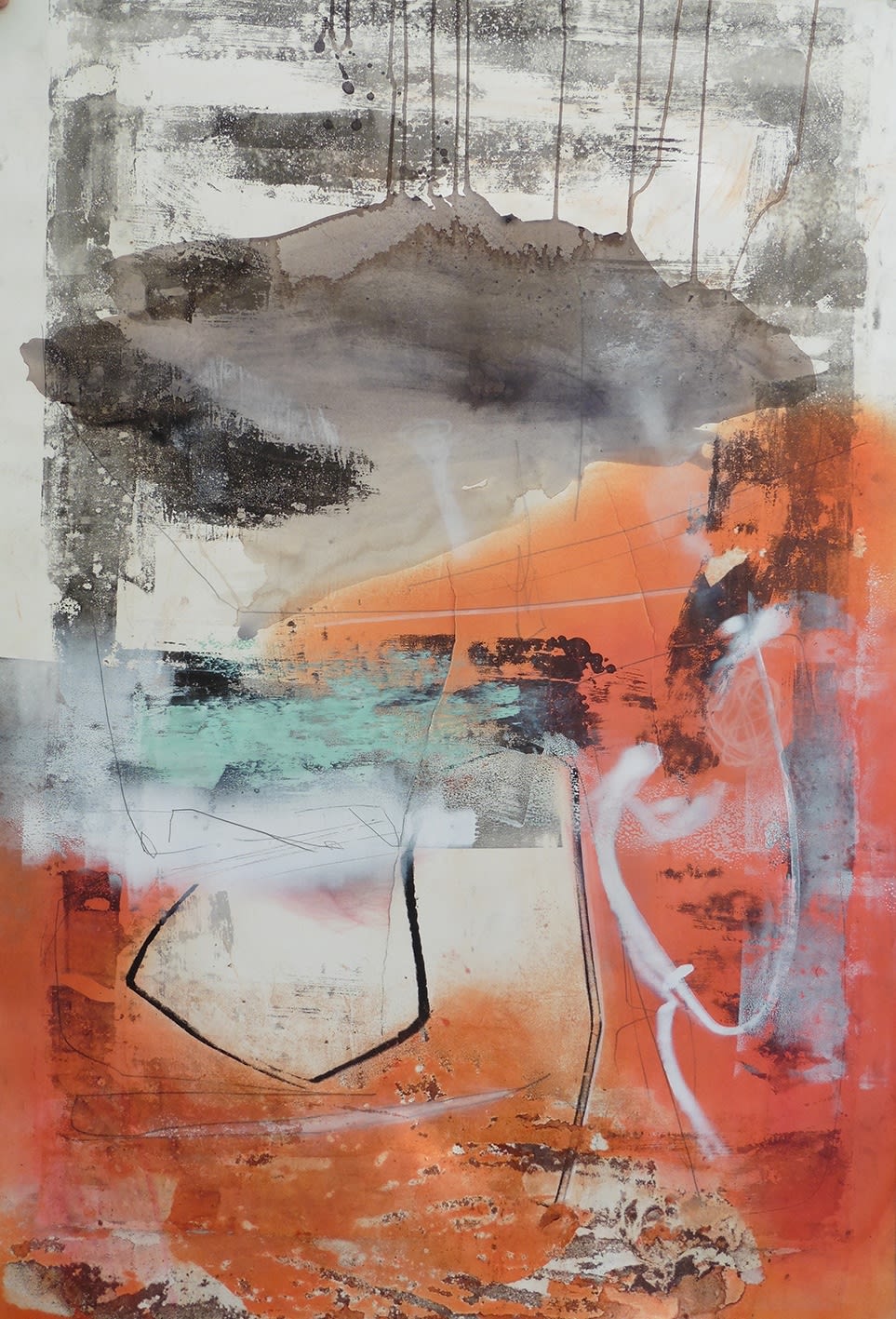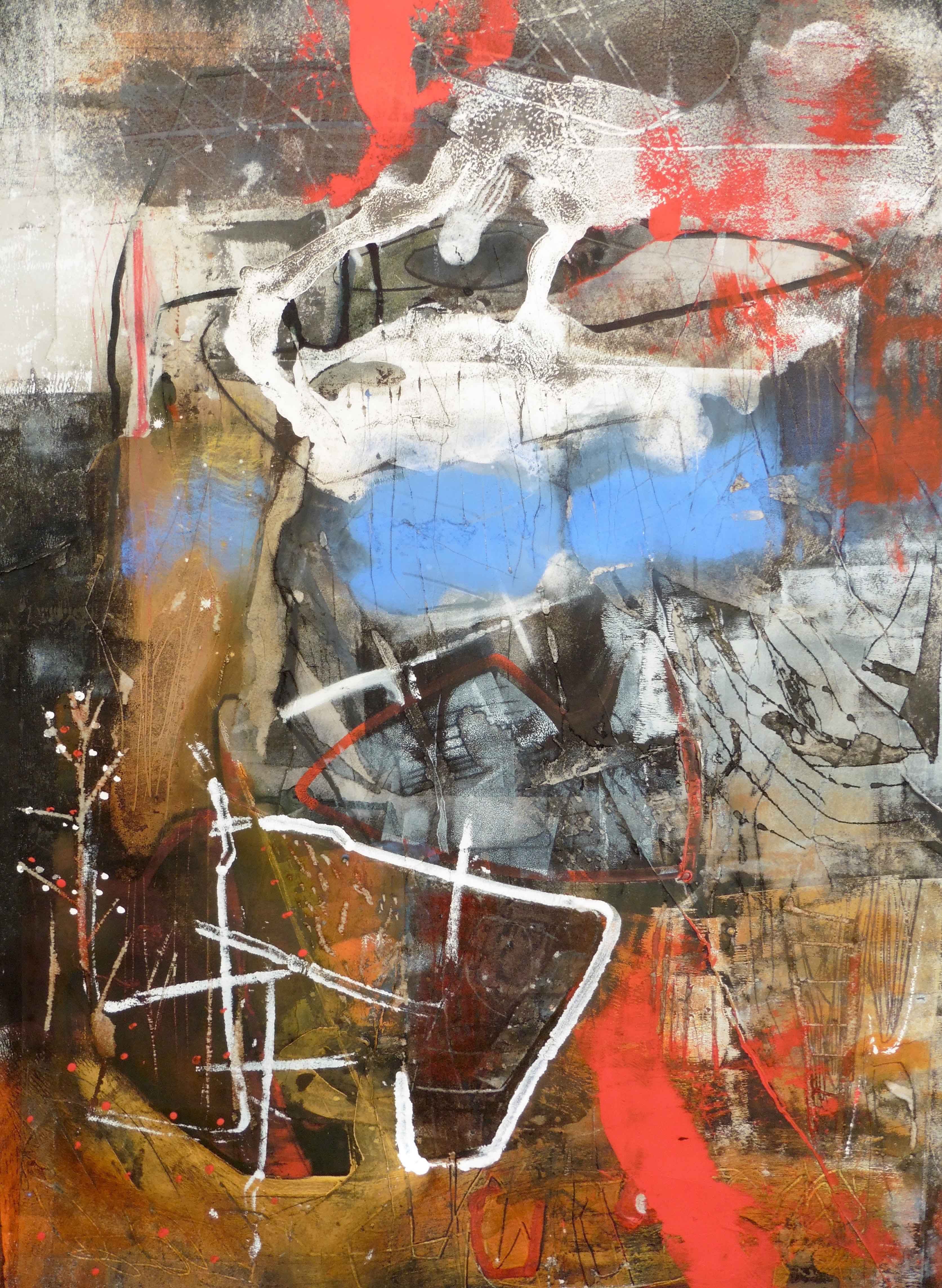Bankside Gallery's Ed Parsons Brown visted RE artist Morgan Doyle at his Chelsea studio, ahead of his solo exhibition this summer.
As I walked through Chelsea with Morgan Doyle, he noticed and pointed out numerous things. He spoke with a young homeless woman he knows on the King’s Road, pointed out a group of street sweepers pushing a trolley laden with brooms, and then a discarded Christmas tree in the street, a ‘beautiful banner’, a house conversion, a building he disliked for marring a neighbouring Modernist structure, the fact that said Modernist structure’s windows needed cleaning. He enthused about a sand bag lying curled in the street, remembered a car he had seen clamped in the King’s Road for four days, and wondered why it hadn’t been taken away. The theme was that any of these things could emerge in one of his pictures, either unconsciously or in a more deliberate way.

The title of his upcoming exhibition at Bankside Gallery is Sounds of the World. He explained that this was a reference to a kind of sensing of the times – sensing the ‘noises’ of the times - a feeling that ‘we live in a horrible world at the moment’ and an attempt to make some response to that in his work. Some comments he made suggested that this body of work reflected a desire to move beyond what he had done before – not just to make something beautiful, which he had become confident about doing, but to move his work into a stage where it was both beautiful and had something to say.

Before saying more about the theme of the exhibition, a few words about his method of working: The main thing I learned from standing in his studio with him was that his approach involves laying out the work in progress – which at that time included some very dynamic drawings which could have been cityscapes, as well as hundreds of small paintings, and some very large and beautiful monoprints – looking at it for a long time until it becomes obvious what needs doing to any given piece, and then doing it. He does not have much truck with separating out different mediums (a painting can be printed on, for example) or with restrictions of any kind: when we were speaking in the studio he was considering combining three large pieces into one huge one. He also expressed clearly that he didn’t want people who had seen his work before to be able to predict what his next show would be like.
By and large his monoprints and paintings are abstract, but talking with him I discerned two ways in which, as per the theme of the show, the ‘noises of the times’ or the ‘Sounds of the World’ emerge in his work.

Firstly it is through the gestural expression in them. Before setting out to walk from his studio to the Chelsea Arts Club, he had been showing me various works in progress. One was called ‘Unrecallable Now’ (reproduced to the left/right) – a large monoprint, one of a series of six, done on cardboard. Most of it was vigorous abstract marks layered on top of each other, but in one corner he had drawn what looked like a small plant beginning to grow.
Morgan explained: ‘These were done on cardboard, not on printing paper, and in a funny way I was able to score very menacingly into them, to draw, literally draw into it with an etching tool.’ The implication was that these ‘aggressive gestures’ reflected the nature of the times he is trying to sense.
There is a kind of transformation of the noises of the world into something visual going on. He commented: ‘If it looks noisy then it is noisy, if it looks quiet then it’s quiet. I think a lot of the work I made beforehand was always very quiet.’

It seems that the second way these noises are heard in the work is through the mostly unconscious emergence of the things he notices around him, as mentioned in the journey along the King’s Road. He spoke about how, when making a painting recently, he painted a shape which he assumed was abstract, but then realised was something he’d seen in the street. On another occasion, a green shamrock he had dreamt about painting when he was fifteen recently found its way into one of his pieces. Looking at the work laid out in his studio I also thought I saw something like the aforementioned discarded Christmas tree slumped in one of the drawings. I surmised that these everyday things and people, and the situations they were in, each said something about the ‘noises of the times’, whether in a clearly articulable way or not.
Doyle was originally going to call the show ‘Noticing Things’, and it is interesting to consider why he (or anyone) notices certain things but not others.
He describes his work as ‘a bit like coming back from a holiday, and they say ‘how was it?’ and you only think of one incident.’ I understood this to mean that one small thing actually signifies something much broader – it reminded me of a motif from Eastern literature where ‘one flower heralds the arrival of Spring’.
I asked him what his influences were, and he said:
‘I suppose, I used to go back to the fifties and sixties artists, like Prunella Clough, but now my influences are like, the bags on the street’ – this was a reference to the sand bag he had seen earlier and was very enthusiastic about – ‘I look at things, like that bag on the street; how can I make that into something, or that girl sitting there begging. My influences are not other artists, although I do admire other artists, my influences tend to be a little obscure – it’s more the things outside of art, the things that make art.’
Did he mean seeing the mundane or the everyday from a different perspective?
‘We’re just very privileged to be able to convert that into something interesting.’

I remembered that Doyle also writes, and he had mentioned an interest in Samuel Beckett - whom he described as ‘writing normal things about normal people, but then it sounds weird’ – and wondered about how the working process he is describing fits in with narrative and writing. Are the objects appearing in the work – the sandbags and clamped cars on the street – important because of the story they are telling? Rather than directly answering, Doyle started talking about an exhibition he had been involved with some years ago:
‘I wrote a text which looked like a kind of poem at the end, but it was really like just ‘I saw a bag, why’s it not clamped’, this sort of thing, and I didn’t think anything about them, but this French intellectual came up and said ‘I like it’ and I was just like ‘oh no, they’re just my notes’…. I suppose notation is what I make.’
So it seemed that there was a kind of parallel between his written and visual ‘notes’ – they are both records of what he notices about the world, or like musical notation of the sounds of the world.
Sounds of the World opens at Bankside Gallery on Wednesday 13 June.
Opening reception: Tuesday 12 June, 6 - 8pm. RSVP here.

